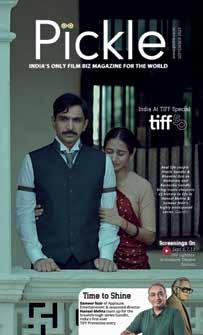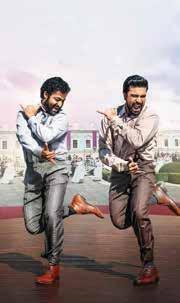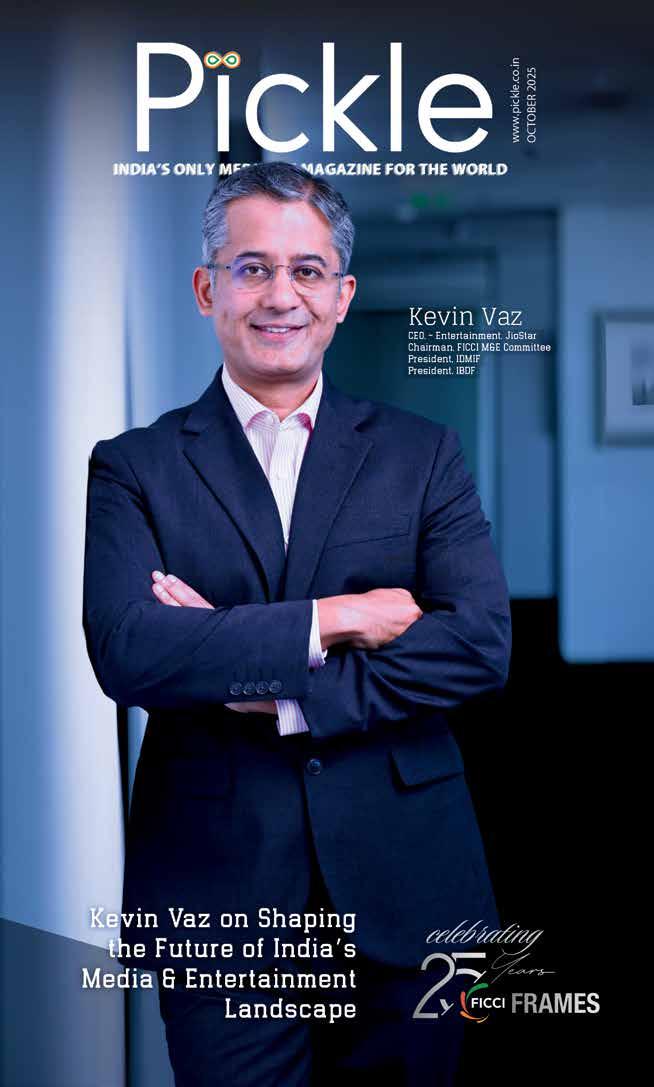
Where deals are done, partnerships are born, and stories find their stage.

13th-16th October
Palais des Festivals, Cannes.


Where deals are done, partnerships are born, and stories find their stage.

13th-16th October
Palais des Festivals, Cannes.
It was March 25, 2000—a Saturday noon— when an unexpected call came from Amit Mitra, then Secretary General of FICCI. At the Times of India office on Bahadur Shah Zafar Marg, Delhi, there was no inkling this call would mark the beginning of a long association with India’s media and entertainment industry landscape.. Later that day, at FICCI’s Mandi House headquarters, the prospects and potential of the Indian entertainment business became clear.
The first Entertainment Conference was held with Lalit Kumar Modi as chairman and Amit Khanna as co-chair. Two towering figures, Amit Mitra and legendary filmmaker Yash Chopra, were the architects behind this visionary initiative. From 2001 onwards, the event, renamed as FICCI FRAMES grew into Asia’s premier media and entertainment platform, fostering dialogue, policy formation, and industry growth.
Reflecting on reportage from that time, a 27th March 2000 article, highlighted the optimism surrounding the industry’s

n vidyasagar pickle media nat@pickle.co.in, www.pickle.co.in
Published by Pickle Media Private Limited
Email: natvid@gmail.com
l Mumbai l Chennai No.2, Habib Complex Dr Durgabhai Deshmukh Road
RA Puram CHENNAI 600 028
For advertising: natvid@gmail.com / pickle@pickle.co.in
Pickle Business Guide 2025 Copyright 2025 by
Pickle Media Pvt Ltd. All Rights Reserved.
growth. A study commissioned by FICCI and Arthur Andersen projected the Indian film industry rising from Rs 6,000 crore to Rs 35,000 crore by 2005, while music revenues were expected to double.
Today,at $30 bn M&E industry, India produces over 200,000 hours of original content annually, viewed across 190 million screens, generating an astonishing 46 trillion hours of viewing.
In this issue of Pickle, a conversation with Kevin Vaz, CEO of Entertainment at JioStar and Chairman of FICCI’s M&E Committee, highlights how India is on track to become a dominant global media and entertainment player. Additionally, a nostalgic journey through the event’s most memorable moments celebrates its remarkable legacy and industry impact.
Looking ahead, our vision for India’s creative economy is bold: projected to reach $1 trillion by 2047, aligning with India@100. The 25th edition of the event promises to celebrate the resilience of creative minds and the shared ambition of an industry confidently shaping a global success story.
Senior Editor : Vivek Ratnakar
Editorial Coordinators : Maitreyi Vidyasagar, Shruti Sundaranand
Design: Jose J Reegan, James, D Sharma, S Lakshmanan
Photo Editor : K K Laskar
Admin & Operations : B Rajalakshmi
Email: natvid@gmail.com
Pickle is an ad supported business guide tracking the filmed entertainment business in India.













































































































































































































































































What started as an initiative to unify India’s Film, Animation, Visual Effects, Gaming, Comics and XR (AVGC-XR) sectors has transformed into India’s largest digital entertainment festival — endorsed by the Government of Telangana and powered by the IndianFilm, AVGC-XR ecosystem.








30,000+ Visitors










200+ Exhibitors
Sri. D. Sridhar Babu
“The Indian VFX, Animation & Gaming Industry is at a very interesting and crucial juncture. With endless possibilities, the future will be demanding and very fruitful. The Govt of Telangana supports the local talent and soft power through IndiaJoy.” Indiajoy




TRADE CENTER 5TH - 7 TH NOV 2025






SOUTH ASIA’S
SOUTH ASIA’S
SOUTH ASIA’S
TOP FILM MARKET FOR
TOP FILM MARKET FOR
TOP FILM MARKET FOR
TOP FILM MARKET FOR SOUTH ASIA’S
GLOBAL COLLABORATIONS & CO-PRODUCTION
GLOBAL COLLABORATIONS & CO-PRODUCTION
GLOBAL COLLABORATIONS & CO-PRODUCTION
GLOBAL COLLABORATIONS & CO-PRODUCTION
20-24 November, 2025 | At Marriott, Panjim, Goa
20-24 November, 2025 | At Marriott, Panjim, Goa
20-24 November, 2025 | At Marriott, Panjim, Goa
20-24 November, 2025 | At Marriott, Panjim, Goa TOP FILM MARKET FOR SOUTH ASIA’S GLOBAL COLLABORATIONS & CO-PRODUCTION
20-24 November, 2025 | At Marriott, Panjim, Goa
Main verticals
Main verticals
Main verticals
Main verticals
Main verticals
CO PRODUCTION MARKET
CO PRODUCTION MARKET
CO PRODUCTION MARKET SCREENWRITERS’ LAB
SCREENWRITERS’ LAB WORK IN PROGRESS LAB
SCREENWRITERS’ LAB WORK IN PROGRESS LAB
WORK IN PROGRESS LAB
CO PRODUCTION MARKET SCREENWRITERS’ LAB WORK IN PROGRESS LAB
VIEWING ROOM
CO PRODUCTION MARKET SCREENWRITERS’ LAB WORK IN PROGRESS LAB
VIEWING ROOM
It is a converging point for South Asian & international film makers & film producers, sales agents & festival programmers for potential creative & financial collaboration






November 20-28,2025 | Goa, India












LOS ANGELES I NOVEMBER 11-16, 2025


The
As FICCI FRAMES marks 25 years, we honor the visionaries, leaders, and changemakers whose passion and foresight made it India’s premier platform for media and entertainment.


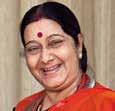

Yash Chopra’s passion elevated FICCI FRAMES, turning a small industry into an IP powerhouse. He leveraged star power, championed creative excellence, and fought piracy. His enduring vision and pursuit of progress remain the gold standard in India’s filmed entertainment sector.
Amit Mitra, FICCI Director General, foresaw India’s media potential early and championed elevating film to industry status. His strategic leadership fostered best practices, nurtured talent, and forged government partnerships, modernizing the sector and creating a globally respected, opportunity-rich media landscape.
Sushma Swaraj, Minister of Information & Broadcasting, fiercely supported FICCI FRAMES, securing industry status for films and IDBI funding. She foresaw the potential of “Filming in India,” driving media liberalization and globalizing Indian entertainment, fueling the sector’s dynamic growth.
Amit Khanna, a visionary pioneer, blended creativity, business, and technology to shape India’s media landscape. As long-time FICCI FRAMES co-chair, he spearheaded media convergence and anticipated evolving consumer trends, guiding India’s entertainment sector towards greater innovation and sustained global expansion.




Kunal Dasgupta, former Sony Entertainment Television CEO, championed innovative programming and early recognition of India’s market potential. As FICCI FRAMES chairman, his visionary leadership sustained the forum, boosting its growth and reinforcing its role as a cornerstone of Indian media.
Karan Johar, who led FICCI’s Entertainment Committee, carries forward the legacy of Yash Chopra and Yash Johar. A visionary blending tradition and modernity, he brought fresh talent, global practices, and a culture of credibility, creativity, and transparency to the Indian media industry.
As FICCI’s M&E Committee chair, Uday Shankar transformed India’s media landscape. A visionary leader, he de-glamorised the sector, championed policy reforms, revolutionized sports broadcasting, and inspired a generation, cementing his legacy as a modern architect of FICCI FRAMES.
Kamal Haasan expanded FICCI FRAMES’ influence to South India, strengthening regional representation and tech focus. Now an influential Rajya Sabha MP, he continues to advocate for India’s cinematic brilliance with visionary insight and unwavering confidence in the industry’s creative power.
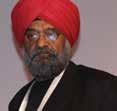



Producer Bobby Bedi was crucial in shaping FICCI FRAMES, curating insightful knowledge forums and global thought leadership. A trailblazer in film financing, he championed cinema’s industry status, introduced film insurance, and created a visionary platform showcasing India’s creative excellence worldwide.
Ashish SK has been instrumental in advancing India’s AVGCXR and creative economy through FICCI FRAMES. As founder of PunnaryugArtvision and chair of FICCI’s AVGC-XR Forum for over two decades, he advocated talent growth, innovative policies, and global cooperation, positioning India as a digital creativity hub. He is also the creator of FICCI BAF Awards.
A.P. Parigi, a media veteran and staunch FICCI FRAMES supporter, played a pioneering role in radio reforms and media liberalisation. As a dynamic leader at The Times of India Group, he championed industry welfare, best practices, and transparency, creating new opportunities and jobs in India’s growing creative economy.
Animation pioneer Munjal Shroff, chair of FICCI AVGC-XR Forum, advocates the motto “Create in India, Design for the World.” He played a key role in bringing global anime icons and legends like Ram Mohan to FICCI FRAMES, passionately shaping India’s animation industry for international prominence.

Siddhartha Dasgupta was a key force in FICCI FRAMES’ early years, bridging industry leadership and vision under Dr. Amit Mitra. His quiet determination and strategic finesse helped establish FRAMES as a benchmark event. He now leads Corporate Affairs at PRISM.


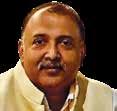
Leena Jaisani, FICCI’s Deputy Secretary General, has been integral to FICCI FRAMES since its inception in 2000. Mentored by Dr. Amit Mitra, Siddhartha Dasgupta, Yash Chopra, her decade of leadership and deep industry understanding make her a respected voice championing the media and entertainment sector’s evolution.
Ayushmann Khurrana, ambassador for FICCI FRAMES 2025’s silver jubilee, embodies Indian cinema’s global spirit. A champion of fresh talent and creative innovation, he returns as a cultural icon and industry ally, celebrating India’s creative journey on the world stage.
Ravi Kottarakara has played a crucial role in uniting Indian cinema’s diverse stakeholders. A key figure at FICCI FRAMES, his expertise in copyright and intellectual property, alongside leadership at FFI and the South Indian Film Chamber, has shaped essential policies and fostered collaboration for industry-wide growth.


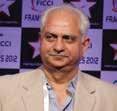

Ravi Velhal brought Intel’s cuttingedge technology to FICCI FRAMES, merging storytelling with immersive tech. A pioneer in 8K OTT and VR Olympic streams, his “Tech meets Story” approach revolutionized image-making and inspired FRAMES with groundbreaking innovation, technology and global public policy since 2008
Neeraj Roy, a digital media trailblazer, transformed the industry with mobile and appdriven innovation at FICCI FRAMES. His foresight shaped new business models and audience engagement, making him a leading force in India’s digital media evolution well ahead of the curve.
Ramesh Sippy, iconic filmmaker and former FICCI Entertainment Committee CoChair, has been a steadfast collaborator in the industry. His visionary leadership and partnerships with legends like Yash Chopra have shaped policy dialogue, marking FRAMES’ silver jubilee alongside Sholay’s golden anniversary.
Vikram Chandra, veteran broadcast and digital journalist and ex-NDTV CEO, spotlighted news and digital media at FICCI FRAMES. A thought leader in journalism ethics and policy, he champions preserving credibility in the news ecosystem amid the rise of social media.




Ashish Pherwani, Media & Entertainment Leader at EY India, has authored FICCI FRAMES reports for eight consecutive years. His authoritative insights on digital transformation, market trends, and strategic growth make these reports essential references for industry positioning and policy advocacy in Indian M&E.
Jehil Thakkar, a veteran from Deloitte and KPMG, has been a key contributor to FICCI FRAMES through influential reports on India’s media and entertainment sector. His thought leadership on digital trends and advertising shifts highlights his role as a pioneering strategist bridging technology, media innovation, and growth for over a decade.
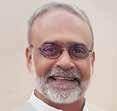
Sabbas Joseph of Wizcraft has been a vibrant force at FICCI FRAMES, driving live entertainment’s growth. Through IIFA and strategic partnerships, he has significantly boosted Indian cinema’s global presence, bringing unparalleled energy and brilliance that elevate both the FICCI FRAMES forum and the industry’s global stature.
Supran Sen was a driving force in FICCI FRAMES’ formative years, advocating for industry status, policy reforms, and inclusive dialogue. As a wellconnected insider and Mumbai’s industry face in the 2000s and beyond, he helped build vital forums that united stakeholders and amplified the sector’s voice in business and policy growth.
Rajiv Chaudhary, a behind-the-scenes stalwart at FICCI BAF Awards, has been essential in identifying and celebrating emerging AVGC-XR talent. His meticulous curation has transformed BAF Awards into an industry standard, inspiring countless young creatives to achieve excellence.
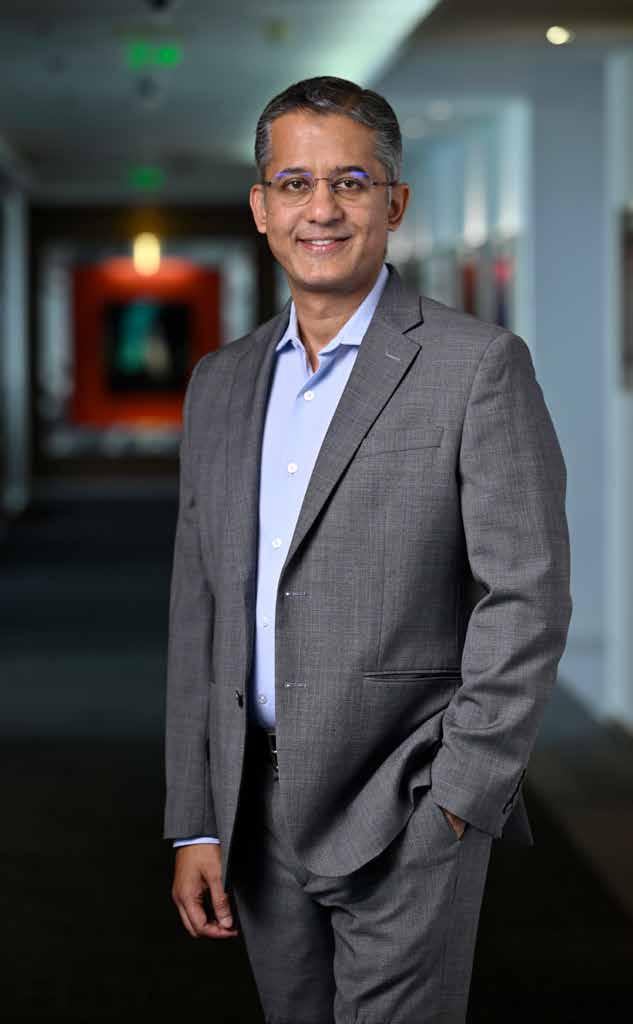
Kevin Vaz
CEO,
Entertainment, JioStar
Chairman, FICCI Media and Entertainment Committee
President, Indian Digital Media Industry Foundation (IDMIF)
President, Indian Broadcasting & Digital Foundation (IBDF)
Kevin Vaz, CEO of Entertainment at JioStar, brings nearly 30 years of experience shaping India’s vibrant media landscape. He outlines strategic priorities to unify the creative ecosystem, drive innovation and digital transformation, and strengthen policy advocacy. He highlights India’s rise toward becoming the world’s third-largest media market by 2028.
As a business leader, you wear four hats—CEO of JioStar Entertainment Business, Chairman of FICCI Media and Entertainment Committee, President of the Indian Broadcasting & Digital Foundation (IBDF), and President of the Indian Digital Media Industry Foundation (IDMIF). Having spent nearly three decades in media and entertainment, what are your immediate priorities, and where is the Indian M&E industry heading towards?
The Indian M&E industry is at a fascinating inflection point. The opportunity is immense and untapped to a large extent—from television and digital to cinema and music to gaming, animation, and
live entertainment, India is seeing a surge of creativity and consumption across all segments.
The sector is worth ₹2.5 trillion (about USD 29 billion) and contributes around 0.7 percent of GDP. My immediate priority is to make sure that the creative value chain works as a cohesive unit to increase the industry’s contribution to GDP and meet the expectation that we will become the world’s third largest M&E market by 2028. Driving policy advocacy, fostering innovation, and accelerating digital transformation with better measurement, transparency, and monetization frameworks are other key focus areas.
Having spent nearly three decades in this space, what excites me most is that India’s cultural output is no longer just shaping narratives domestically but also resonating globally. The future of Indian media and entertainment will be defined by a blend of traditional strength, digital innovation, and the rise of allied segments—from film and music to gaming and live experiences—with the ambition of making India the storytelling capital of the world.
As FICCI FRAMES marks 25 years, what key moments do you think have shaped the Indian media and entertainment ecosystem?
To begin with, it is important to acknowledge and recall the remarkable work of my legendary predecessors, Mr. Yash Chopra and Mr. Uday Shankar, who have played an integral role in FICCI and in shaping the Indian M&E industry. I would also like to extend a special thanks to Ms. Leena Jaisani, Deputy Secretary General, who has been associated with FICCI for over 25 years.
Over the past 25 years, FICCI FRAMES has not only chronicled but also shaped the evolution of Indian media and entertainment— from the early days of satellite television to the digital revolution we are living through today. The initial years of this journey saw television becoming an integral part of every household’s family experience, and over time, the industry has transformed from terrestrial TV to pay TV and now to the OTT revolution across both audio and video streaming platforms.
On the policy and regulatory front, the FICCI M&E Committee has been instrumental in securing industry status for M&E in 1998, driving the implementation of the Digital Addressable System (DAS) in 2010, reviewing and reforming the TRP system, enabling self-regulatory bodies for television content, and shaping uplinking and downlinking guidelines in 2005, 2011, and 2022. More recently, the launch of the National AVGC policy in 2022 reflects how new sectors are being nurtured for global competitiveness.
Equally significant are cultural and commercial milestones, from Indian cinema traveling to international markets to the launch of the Indian Premier League, which continues to be the blueprint for sports monetization and fan engagement. Today, as technologies like AVGC-XR and AI begin to permeate the creative value chain, we stand at the cusp of yet another wave of transformation.
This Silver Jubilee year highlights India’s extraordinary trajectory, and we are on course to become the world’s third-largest M&E market by 2028. FRAMES has been both a mirror to this transformation and an enabler of it, ensuring that India’s media and entertainment industry remains at the forefront of cultural and economic growth.
CELEBRATING 25 YEARS, FICCI FRAMES HAS MIRRORED AND SHAPED
Navigating M&E industry verticals, what’s your vision to empower the industry during this iconic Silver Jubilee moment?
We have reached a stage where we can meet the entertainment appetite of our audiences, but consumer preferences are evolving rapidly. A young commuter may want to binge an entire series on a train journey, while a family still gathers every evening to watch their favorite soap opera in a language of their choice. Our vision must be to serve both with agility, innovation and inclusivity.
So, the strategy ahead is simple yet powerful: work together to grow viewership and engagement across every screen—TV, digital, and connected TV. This Silver Jubilee moment is about reaffirming our commitment to telling stories that reach wider, resonate deeper, and strengthen India’s leadership in global entertainment.
India is currently battling a lot of economic pressures in the new world order, and how do you think the media and entertainment industry can give an impetus through its soft power?
India is navigating economic pressures in the new world order, and I believe the media and entertainment industry can be a force multiplier for India’s soft power. My vision is to use the Silver Jubilee of FRAMES as a launchpad for India’s march towards becoming a $100 billion industry by 2030—by unlocking the sector’s potential, pushing for regulatory reforms to make India the Content Hub of the World, and embracing emerging technologies like AI.
We must draw strength from our deep-rooted storytelling culture, which is now capturing global imagination, as witnessed in RRR’s Oscar-winning triumph and Payal Kapadia’s All We Imagine As Light winning at Cannes. Alongside creativity, India’s role as
a production hub for films from Avatar to Avengers showcases our global contribution.
As we move forward, co-productions, collaborations, and cultural exchanges will ensure Indian stories continue to travel and resonate. Through this blend of creativity and capability, our industry can not only drive economic growth but also amplify India’s influence on the world stage.
What are the top three trends -that will define India’s media and entertainment sector by 2030?
The future of India’s media and entertainment sector will be defined by three broad trends:
First, the rise of the “AND” consumer. India will remain one of the few markets where television continues to thrive alongside digital. The fundamentals of linear TV remain strong, where 97% of original content is still created for television, and the co-viewing culture continues to be at the heart of Indian homes. At the same time, digital platforms are

reshaping preferences with personalized, interactive, and immersive experiences, enabling everything from binge-watching to discovering global cinema at affordable rates. This coexistence of TV and digital is unique to India and will endure.
Second, the rise of regional content. Regional storytelling is deepening engagement within India and emerging as a powerful global export. From blockbuster hits to streaming originals, regional content is carrying India’s cultural identity abroad, reinforcing our soft power, and contributing to the globalization of Indian creativity.
Third, technology-led transformation. AI diffusion across M&E supply chains will not only boost productivity but also spark a long conversation on what creativity means in an AI-enabled world. Alongside AI, advances in CTV, FAST channels, live commerce, new monetization models, and better measurement tools will fundamentally redefine how audiences consume and engage with content.
I strongly believe Indian consumers are uniquely positioned—spoiled for choice with the world’s most affordable access to both TV and digital content, supported by world-class digital infrastructure and rising disposable incomes. With policymakers and stakeholders working in tandem to unlock opportunities, India’s M&E sector is poised to become a global player and is well on course to be a $100 billion industry by 2030.
How do we prepare to become a $100 bn industry by 2030?
To reach the $100 billion mark by 2030, we need to focus on a few critical levers. First, unlocking advertising growth by ensuring premium content creators get their fair share across both TV and digital and evolving measurement systems to capture true value. Second, accelerating monetization through innovative models from AVOD and SVOD hybrids to live events, gaming, and commerce-led entertainment. Third, investing deeply in talent and technology, because the future will be shaped by skilled creators and cutting-edge distribution platforms. Equally important will be expanding exports and cultural influence. Indian films, series, animation, and gaming IP can travel much further, building India’s presence as a creative economy. And none of this can happen without close collaboration between industry and government. The recent GST clarity, which supported festive ad spends, is an example of how policy alignment can
unlock scale. With the right frameworks in place, India has every opportunity to scale sustainably and position itself as one of the top three media and entertainment markets in the world by 2030.
If you had to pick one policy reform or initiative that could unlock the next phase of growth for Indian media, what would it be?
If I had to pick one policy reform to unlock the next phase of growth for Indian media, it would be better IP enforcement at the last mile— whether it’s piracy operations originating in rural areas or commercial establishments using TV and digital content without authorization. Even in urban centers, IP infringement is widespread, but the burden of enforcement often falls on creators. A stronger, consistent enforcement regime would act as a deterrent and encourage licensees to obtain proper permissions.
I welcome the recent announcement by the Ministry of Information & Broadcasting (MIB) on forming a dedicated task force to combat film piracy, which aims to curb annual losses of around ₹22,400 crore and strengthen the creative economy. I urge the Ministry to extend the task force’s mandate to cover piracy in both TV and OTT verticals. This central task force should include senior officers from MIB, DPIIT
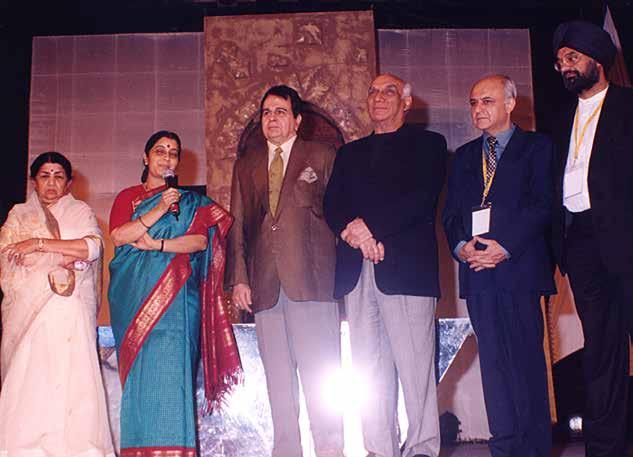
Legends unite as Lata Mangeshkar, Sushma Swaraj, Dilip Kumar, Yash Chopra, Amit Khanna, and Bobby Bedi share the stage—capturing the spirit of Indian cinema and culture in one historic frame
(Copyright), DOT, and MeitY— similar to the Inter-Departmental Committee (IDC) for content regulation—to ensure robust enforcement mechanisms down to the state and district levels.
How effective are current regulations in balancing consumer protection, creativity, and innovation, especially as the lines blur between broadcasters, creators, and tech platforms?
Current regulations provide adequate consumer protection, but we should also focus on consumer welfare beyond just safety, ensuring audiences have maximum choice in terms of distribution mode, content format, and where they want to watch.
When it comes to creativity and innovation, regulators need to examine monetization pipelines closely and remove bottlenecks that could stifle growth. As the lines blur
between broadcasters, creators, and tech platforms, the goal should be a regulatory framework that enables experimentation, fair monetization, and access while maintaining accountability and transparency.
What are the biggest roadblocks to India’s media and entertainment sector realizing its full potential, and what’s your advice as an industry leader to policymakers on addressing these?
The broadcasting and OTT industries are central to the growth of India’s media and entertainment sector. The need of the hour is for regulators to adopt a light-touch approach with forbearance. The industry is highly competitive and operates as a double-sided market, relying on both subscription and advertising revenue. No broadcaster will price a channel beyond the reach of subscribers, as this would hurt both viewership and advertising income.
A regulatory framework based on forbearance ensures orderly growth of the sector while protecting consumer interests, addressing potential concerns about anti-competitive practices without stifling innovation or market dynamics.
What is your view on AI’s impact on the Media & Entertainment industry? As an industry, what should be the priority for responsible AI?
AI has the power to transform the industry by improving personalization and interactivity, enabling efficient dubbing, and enhancing production workflows. But Responsible AI must be anchored in copyright protection, misinformation safeguards, and ethical standards, as innovation cannot come at the cost of trust. Some use cases like deepfakes are deeply concerning, but the same technology can transform production if done with consent and licensing.
You’ve often described India as an “AND” market—TV AND digital, not TV OR digital. How do you see this evolving going forward in the Indian media and entertainment landscape?
The ability to embrace tradition and innovation simultaneously makes our ecosystem unique, and India will continue to embrace both. Television continues to expand, with households projected to grow from 190 million in 2024 to 214 million by 2026. At the same time, digital platforms are scaling at unprecedented speed.
Content consumption is fluid today, and people move seamlessly across screens. At home, audiences may prefer TV or Connected TV, but on the go, they seamlessly switch to their mobile devices. This coexistence will continue, and the opportunity lies in serving consumers across platforms at their convenience. With TV and OTT together, this hybrid model is India’s strength. It’s why the country is on track to become the third-largest media and entertainment market globally by 2028. We want the
best of all worlds, and India’s consumers are showing that they want the same.
Iconic shows like Kyunki Saas Bhi Kabhi Bahu Thi are being relaunched alongside new-age thrillers like Special Ops. How do you balance nostalgia with fresh storytelling, and what’s your playbook for keeping content relevant across generations?
Kyunki Saas Bhi Kabhi Bahu Thi is more than just a television show; it’s a cultural landmark that shaped and reflected the values of an entire generation. In today’s fragmented content landscape, the decision to bring it back in 2025 was driven by the desire to complete an unfinished story in a way that resonates with contemporary audiences.
This revival isn’t about recreating the past; it’s about reimagining a beloved story with a fresh lens and addressing today’s social dynamics, generational conflicts, and evolving family structures. While shows like Special Ops demonstrate how compelling storytelling can captivate modern viewers, Kyunki blends that narrative rigor with nostalgia, connecting emotionally with audiences while remaining relevant to today’s world.
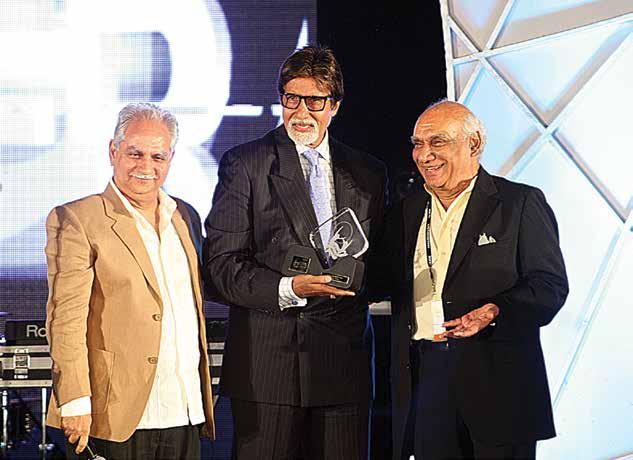
A milestone moment at FICCI FRAMES: Amitabh Bachchan receives award from legendary filmmaker Yash Chopra, with acclaimed director Ramesh Sippy joining in the celebration on stage
Beyond cricket, what other genres or formats will drive the next wave of monetization and audience growth?
Beyond cricket, the next wave of monetization and audience growth will be driven by a mix of premium sports, unscripted entertainment, and regional storytelling across languages. Live sports like football, kabaddi, and tennis continue to attract scale and engagement, while unscripted formats—reality, talent shows, and game shows—drive high viewer interaction and brand integration opportunities. At the same time, regional films, series, and originals are unlocking new markets and audiences, making diverse content the key engine for growth across both digital and linear platforms.
Regional programming—from Bigg Boss in multiple languages to record-breaking Tamil and Malayalam content—has been central to your leadership. What’s next for regional content, and how do you see it shaping India’s entertainment landscape, both domestically and globally? Your leadership roots stem from successfully navigating regional channels in Star India?
Regional programming has been a cornerstone of our strategy right from Bigg Boss in multiple languages to record-breaking Tamil and Malayalam content. The next phase is about further deepening our investment in regional storytelling, exploring diverse genres, and creating premium originals that resonate locally while having the potential to travel globally.
Regional content is no longer niche; it is shaping India’s entertainment landscape by driving scale, engagement, and cultural relevance. Having successfully navigated regional channels at Star India, I see enormous opportunity to continue expanding the reach and influence of Indian stories, both domestically and on the global stage.
With regional storytelling gaining global attention, how do you see India exporting content to international markets? Do you see a tipping point where Indian Originals (films and series) achieve the kind of global breakout success that Korean content has enjoyed? Indian regional storytelling has immense potential to achieve the kind of global breakout success that Korean content has enjoyed. 2024 was a breakthrough year with India’s recognition at Cannes and the Oscars, and Southern cinema showcasing world-class storytelling. With strategic investments in production values, marketing, global distribution, and creative focus on authenticity, Indian Originals can find universal appeal while staying rooted in our culture. Regional storytelling is India’s strength; it carries cultural authenticity and diversity, and when presented on global platforms, it becomes India’s most powerful export.
The rise of the creator economy is reshaping the industry. How is JioStar partnering with and empowering independent creators in this new era?
The creator economy is opening doors to fresh voices and perspectives. At JioStar, we are actively lowering the walls that traditionally separated independent creators from mainstream platforms, building pathways for them to collaborate with us, reach larger audiences, and monetize their creativity. By fostering trust, taking creative risks, and providing support, we aim to empower creators to contribute
meaningfully to the broader content ecosystem and redefine storytelling in India.
What industry changes must we make to nurture talent pipelines across smaller markets?
We need structured talent development programs across smaller towns and cities. India’s next wave of creativity will not only come from metros but also from tier-2 and tier3 markets. Building training institutes, mentorship programs, and industry-academia collaborations will be critical.
Lastly, as a business leader leading JioStar, you keep millions of viewers engaged 24/7? How do you unwind? What do you watch or read...
When you truly enjoy your work, it doesn’t feel like work at all. That said, I make it a point to spend quality time with my family, whether it’s watching TV or a good movie together. I also have two dogs who are my biggest de-stressors, and on weekends I enjoy going for a run to recharge and clear my mind.
Having entered the field when India’s animation industry was still taking root, Ashish SK has watched—and helped—nurture it into a flourishing ecosystem of original content and global collaborations. On the 25th anniversary of FICCI FRAMES, he reflects on how it has been pivotal in shaping the M&E as well as AVGC-XR industry’s evolution—building trust, nurturing talent, and positioning India as a global hub for storytelling and digital creativity
By Ashish SK

Ihave had the privilege of witnessing firsthand the incredible evolution of India’s Media & Entertainment (M&E) sector in the last 39 years, much of which has been catalyzed by FICCI FRAMES since 1999-2000. Over the last 25 editions of FICCI FRAMES in 26 years, FRAMES has grown from a modest gathering into Asia’s most influential convention for the industry—driving innovation, policy, and entrepreneurship in ways that have reshaped the landscape of AVGC- XR (Animation, Visual Effects, Gaming, Comics and Extended Reality) and the Film Policies across Indian states.
When FICCI FRAMES began in the early 1999-2000s, it was a three-day event focused on bringing together CEOs, producers, actors, and policymakers. Today, it stands as a dynamic platform where ideas converge, partnerships
AS WE CELEBRATE THE SILVER JUBILEE OF FICCI FRAMES, IT’S CLEAR THAT THE NEXT 25 YEARS HOLD EVEN GREATER POTENTIAL FOR IT, AS INDIA’S CREATIVE ECONOMY CONTINUES TO RISE, POWERED BY INNOVATION, INCLUSIVITY, AND GLOBAL
flourish, and the future of storytelling is crafted. One of FRAMES’ most significant contributions has been its pioneering industry reports. Before these reports, the Indian M&E sector lacked reliable metrics on box office collections, advertising spends, size of the industry verticals and production scales. The annual FRAMES reports became the industry’s compass—guiding IPOs, business strategies, and government policies, while instilling confidence among stakeholders.
FRAMES has also been the crucible where policy and partnership meet. From intense discussions around GST to co-production treaties and regulatory frameworks, the event has been instrumental in shaping a business environment conducive to growth. But beyond policy, FRAMES has always championed innovation. Its awards, competitions like Best Animated Frame (BAF) “Frame Your Idea,” and dedicated marketplaces have nurtured fresh talent and entrepreneurial spirit.
What sets FRAMES apart is its regional impact. By fostering events in Chennai, Bangalore, Kolkata, Hyderabad, and Punjab, FRAMES has amplified India’s diverse storytelling traditions and inspired state governments to adopt AVGC-XR& Film policies tailored to their unique cultural and economic contexts. These regional platforms have also strengthened the talent pipeline, in sync with the National Education Policy and initiatives like the National Centre of Excellence for AVGC-XR called Indian Institute of Creative Technologies (IICT). FICCI FRAMES was also instrumental in encouraging several state governments to start the events and concerts policy.
Perhaps most importantly, FRAMES has bridged the gap between government and industry. The event has encouraged dialogue
that has translated into concrete initiatives such as the Film in India campaign, the Indian Institute of Creative Technologies, Indian Pavilions in several internation markets and tradeshows etc. This collaboration has positioned media and entertainment as vital drivers of India’s soft power and creative exports. Whereby encouraging the younger generations and the parents to gain confidence for making innovative careers in Media and Entertainment sectors.
Looking ahead, the landscape is vibrant and full of promise. The rise of esports, immersive entertainment, and the renaissance of animation / VFX highlight an industry that continually reinvents itself. What was once seen as a niche or fading segment is now a cornerstone of brand storytelling, gaming, and experiential content in the new ever evolving global digital content economy.
The job creation and entrepreneurial opportunities that have blossomed under FRAMES’ influence are staggering. From informal beginnings, the M&E sector now supports thousands of skilled professionals across production, technology, and creative domains. Formal education, research, and startup ecosystems—encouraged by FRAMES—are infusing the industry with fresh talent and a global outlook. FICCI FRAMES initiatives also propelled the incubation of Secor skill Councils like Media and Entertainment Skills Council & Sports Skills Council in FICCI headquarters in 2012 – 2013.
As we celebrate the Silver Jubilee of FICCI FRAMES, it’s clear that the next 25 years hold even greater potential for it, as India’s creative economy continues to rise, powered by innovation, inclusivity, and global ambition.

FICCI launched Asia’s largest media and entertainment convention, creating a structured platform for industry dialogue. It also commissioned India’s first comprehensive entertainment industry report.
FICCI’s advocacy led to the sector being granted “industry status,” enabling access to institutional finance for the first time.
FICCI successfully promoted a fiveyear tax holiday, accelerating cinema infrastructure growth across India.
India’s First Audio-Visual Co-Production Treaty
FICCI catalyzed the treaty with Italy, paving the way for collaborations with over 16 countries including UK, France, and Canada.
Film Facilitation Office (FFO)
FICCI advised on establishing a single-window clearance system to boost domestic and international productions.
Digital Addressable System (DAS) Implementation Supported phased rollout ensuring cable sector transition and stakeholder awareness.
International Content Market Launch
Brought together hundreds of global buyers and sellers, expanding opportunities across film, TV, OTT, animation, and documentary.
“Frame Your Idea” Initiative
Enabled over 3,500 B2B meetings between emerging writers and producers to nurture grassroots content.
Global leaders announced a treaty facilitating joint ventures worth approximately $155 million.
FICCI helped draft regulations to combat piracy through manufacturing controls, in collaboration with the Ministry of Information & Broadcasting.
Broadcast Content Complaints Council (BCCC)
FICCI facilitated consultations that shaped self-regulation guidelines for TV content.
Due to COVID-19, FICCI FRAMES was held virtually, with government announcing SOPs for safe resumption of film and TV production. Experts focused on virtual platforms for business and policy discussions. Emerging trends like OTT growth, niche content, and VFX gained prominence.
Following a 24% 2020 revenue drop, the M&E sector rebounded with ~25% growth. OTT subscriptions surged, digital media surpassed print revenue, and online gaming expanded rapidly. New monetization models, regional content, and hybrid content delivery emerged.
Incentives for Film Production & CoProductions Initiated industry discussions that led to formal incentives announced at Cannes Film Festival.
Media & Entertainment Skills Council (MESC)
Launched to drive vocational training and skill development within the sector under the Ministry of Skill Development.
2024
National Centre of Excellence for Creative Technologies
Collaborated to launch IICT in Mumbai, fostering innovation in content creation and technology.
2025 Maharashtra’s Media & Entertainment Policy
FICCI is assisting in formulating a comprehensive policy to position Maharashtra as a global creative hub.
A vibrant celebration of milestones, leadership, and creativity defining FICCI’s legacy. These images tell the defining moments of a quarter-century of growth, pioneering vision, and collective effort that propelled India’s Media & Entertainment sector onto the global stage
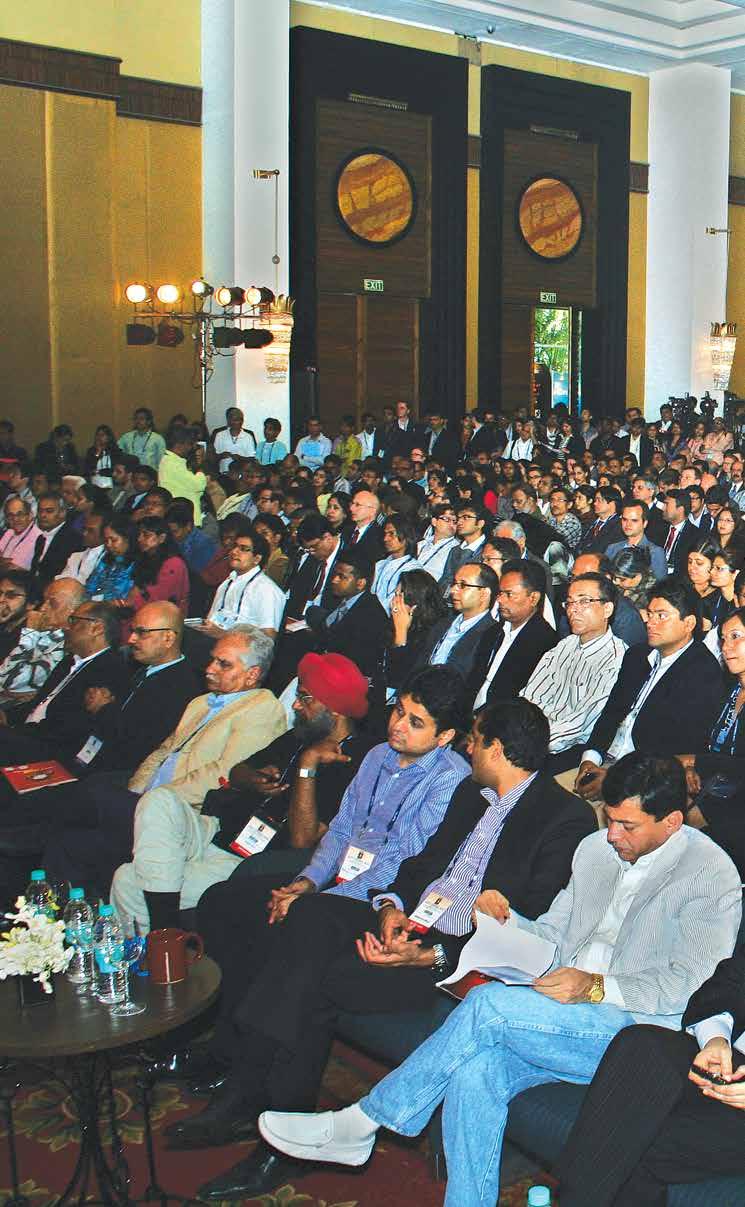


Union Information and Broadcasting Minister Sushma Swaraj, who ushered in “industry status” for Indian cinema, inaugurated FICCI FRAMES 2002. The event also featured a keynote address by James Murdoch, Chairman & CEO of Star Group
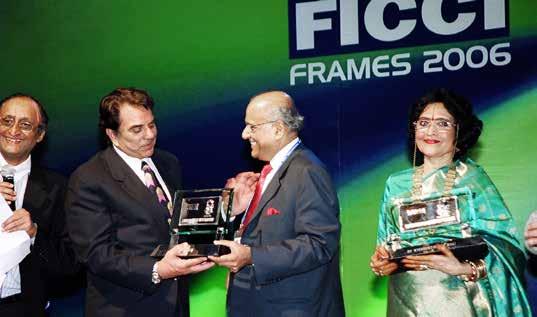
Veteran actors Dharmendra and Vyjayanthimala were honored with the FICCI FRAMES Living Legends in Entertainment awards in 2006 for their outstanding contributions to Indian cinema
During the valedictory address at FICCI FRAMES 2004, Mukesh Ambani, Chairman and Managing Director of Reliance Industries, stated that the Indian entertainment industry has the potential to grow to $200 billion thanks to the rise of the digital age


N. R. Narayana Murthy, co-founder of Infosys, delivered the closing address at FICCI FRAMES 2005, emphasizing that the Indian entertainment industry could achieve global prominence by embracing a global mindset and lofty aspirations, following the path of the Indian IT sector

Aamir Khan, an Industry Well-Wisher, Has Attended FICCI FRAMES Since Its Early Years
Media veteran Uday Shankar, former FICCI Entertainment Committee Chairman, was a major driving force behind FICCI FRAMES
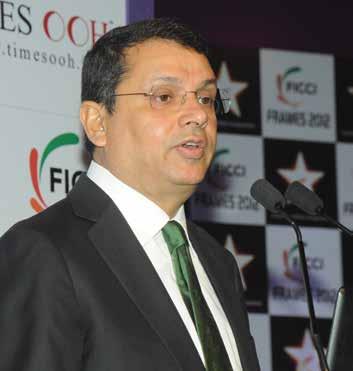

Kunal Dasgupta, former CEO of Sony Pictures Networks India, chaired FICCI FRAMES, fostering thought leadership in media & entertainment industry
A memorable FICCI FRAMES 2011 moment featured Shah Rukh Khan teaching Bollywood dance moves to Hugh Jackman


Yash Chopra, Shah Rukh Khan, Aishwarya Rai, and Hugh Jackman together at FICCI FRAMES, celebrating a unique blend of
Ronnie Screwvala and Ekta Kapoor at FICCI FRAMES 2001

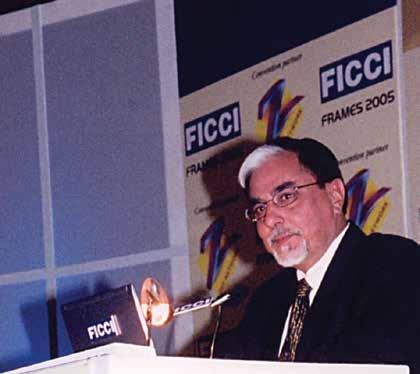
Media veteran and chairman, Zee Telefilms Subhash Chandra honoured as Global Indian Entertainment Personality of the Year at FICCI FRAMES 2004

Anand Mahindra, Chairman of Mahindra Group, and Karan Johar at FICCI FRAMES, highlighting industry leadership and creative synergy
Media veteran Amit Khanna has been a bold and influential voice at FICCI FRAMES, shaping industry perspectives and championing innovation and technology

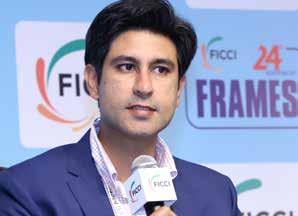
Arjun Nohwar, Co-Chair of the FICCI Media and Entertainment Committee addressed FRAMES 2024 as a new-age voice, highlighting evolving consumption patterns and the future of media innovation
Mira Nair and Zoya Akhtar at FICCI FRAMES


Kamal Haasan and Rekha received the “Living Legend in Entertainment Award” at FICCI FRAMES 2007, honoring their decades of exceptional achievement and contributions to Indian cinema
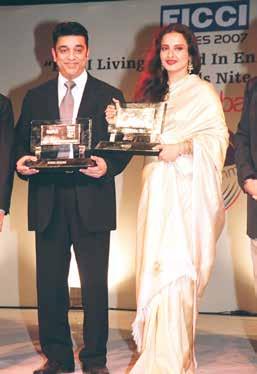
Shilpa Shetty, Kareena Kapoor, Priyanka Chopra, and Preity Zinta graced the FICCI-IIFA Awards ceremony held as part of FICCI FRAMES in February 2009
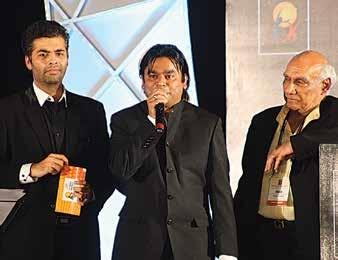
Karan Johar, A R Rahman, and Yash Chopra at FICCI FRAMES 2012; A R Rahman received the FICCI FRAMES Excellence Award for Best Music Director for Rockstar, celebrating creative achievement in Indian cinema


Sandhya Devanathan, Co-Chair of the FICCI Media and Entertainment Committee spoke at FRAMES 2024, bringing fresh insights as a leading voice in the evolving media landscape
Green Gold Animation and EBG Group turn storytelling into a business experience with India’s first Chhota Bheem Café — an ambitious venture that fuses IP innovation, food, and immersive entertainment to redefine how families connect with brands.
In a pioneering move set to redefine family entertainment, Green Gold Animation— the studio behind India’s beloved homegrown superhero Chhota Bheem—and Hyderabad-based EBG Group have joined forces to launch India’s first-ever Chhota Bheem Themed Cafe. Making Hyderabad its
launchpad, this innovative venture promises a unique blend of storytelling, play, and retail to create a wholesome experience for children and parents alike.
Hyderabad, the creative hub and Green Gold’s headquarters, is the natural choice for this ambitious project. With the first two cafes opening in Hitech City by December 2025, the venture aims to rapidly scale, targeting 300 cafes nationwide, starting with 50 outlets in the first year alone. This initiative will not only bring new entertainment options to urban families but is also expected to generate over 250 jobs, spanning chefs, service staff, merchandising, and supply chain roles.
The cafe is thoughtfully designed as a childcentric space where iconic characters like Chhota Bheem, Chutki, and Mighty Raju come to life through interactive play zones, storytelling corners, and licensed merchandise. It offers a safe, healthy environment where kids can learn, play, and grow, while parents enjoy a welcoming space that celebrates family bonding. This venture marks a new chapter for Green Gold’s IP, expanding beyond screens to physical spaces that deepen the connection with its audience.
Rajiv Chilaka, Founder and CEO of Green Gold Animation, reflects on this expansion: “Over the last 17 years, Chhota Bheem has

evolved from an animated character into a cultural phenomenon. Partnering with EBG Group allows us to create immersive realworld experiences that families can cherish, blending food, fun, and storytelling under one roof.”
EBG Group, known for its expertise in food and beverage and franchise operations, brings operational strength to this collaboration.
Dr. Irfan Khan, Founder & CEO of EBG Group, highlights the venture’s vision: “This is not just about food; it’s about creating joyful, meaningful experiences that nurture children’s growth and family happiness. Together with Green Gold, we’re building a scalable, responsible brand that reshapes entertainment and lifestyle.”
This cafe initiative is a significant milestone in Green Gold’s broader strategy to diversify and evolve. In a recent in-depth conversation, Rajiv shared his vision of expanding beyond traditional kids’ animation and tapping into teen and family content, including liveaction and VFX projects. He emphasized the importance of original IP ownership and building sustainable revenue streams through licensing, merchandising, and experiential formats like the cafes.
Rajiv elaborates, “The cafe model is a new frontier for us. Merchandise stores offer limited engagement, but a themed cafe creates immersive experiences that families remember. We are starting in Hyderabad with a company-operated model, then scaling through franchises across India. It’s about building a successful, long-term brand that resonates deeply.”
The move also reflects changing consumer behaviors post-pandemic, where Indians increasingly seek meaningful, family-oriented entertainment within accessible urban locations. Rajiv underscores the need for entertainment spaces that combine learning, physical activity, and cultural storytelling, all within convenient reach—something this cafe aims to achieve.
Green Gold Animation’s flagship character, Chhota Bheem, has become a household name, streaming in over 100 countries and earning national acclaim, including recognition by Prime Minister Narendra Modi. The launch of the cafe is a natural extension of this legacy—a step into creating a 360-degree ecosystem where stories are lived, not just watched.




















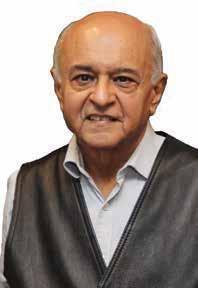

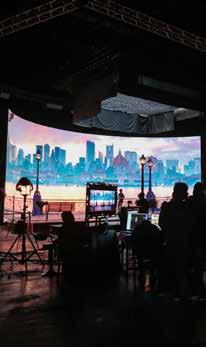














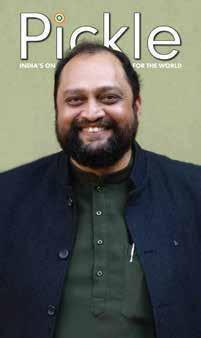

Pickle
